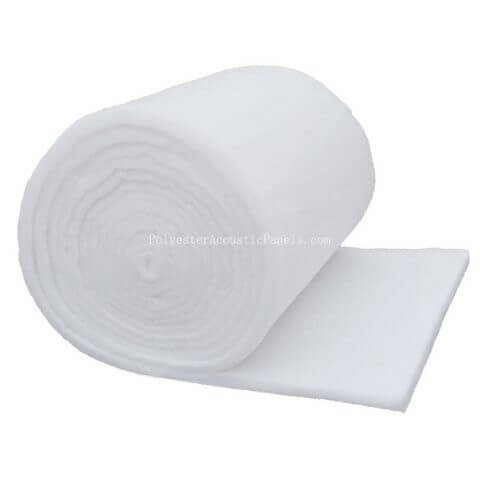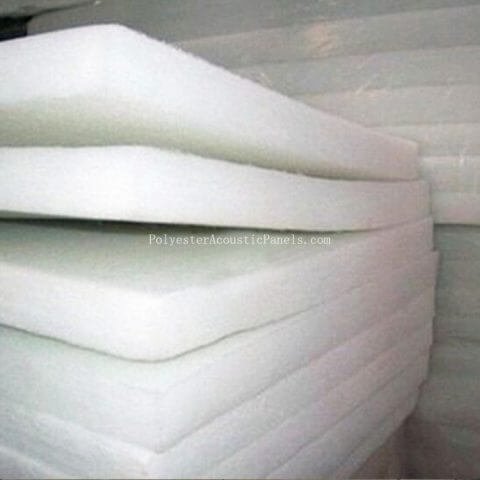I. Introduction
Soundproofing materials play a vital role in creating an idyllic space, from recording studios and home theaters, to simply reducing noise pollution in living spaces. We explore both polyester batts insulation and traditional soundproofing materials so you can make a more informed choice on which will meet your specific needs best. In this blog post, we compare their characteristics and benefits.

II. Understanding Polyester Batt Insulation
Polyester batt insulation, also referred to as acoustic batts, provides an effective soundproofing solution. Made up of densely packed polyester fibers that form an absorbent yet flexible material by polyester insulation batts manufacturers, polyester batt absorbs and dampens sound waves, thus minimizing noise transmission between spaces.
Polyester batting offers numerous notable advantages. First and foremost, its sound-absorption abilities allow it to effectively reduce airborne noise levels while simultaneously decreasing reverberation in a room, making it an excellent choice for environments like recording studios or home theaters. Furthermore, polyester batting insulation’s flexibility enables its easy installation in walls, ceilings and floors – furthering its benefits for noise control applications such as recording studios or home theaters.
Polyester acoustic bat insulation offers many advantages, so it is necessary to address potential drawbacks associated with its use. In this article we won’t focus on individual issues as such but will instead offer an impartial perspective by acknowledging that, like any insulation material, polyester batt may have its own set of considerations or limitations that must be taken into account.
Now that we have an understanding of poly batts, let’s compare traditional soundproofing materials and polyester batt insulation in the following section.

III. Investigating Traditional Soundproofing Materials
Alongside insulation batts polyester, traditional soundproofing materials have long been utilized by industry. Let’s examine some of these materials, their characteristics and how they compare with polyester batt insulation.
Fiberglass Insulation
Fiberglass insulation is an increasingly popular choice for soundproofing applications, composed of tiny glass fibers woven together to form a dense yet flexible material that not only acts as thermal insulation but also offers some degree of sound absorption properties.
Mineral Wool Insulation
Also referred to as rock wool insulation, mineral wool is composed of natural minerals like basalt or diabase which are then processed through melting before being spun into fibers for insulation purposes. Mineral wool has excellent fireproofing capabilities while still offering soundproofing benefits.
Cellulose Insulation
Cellulose insulation is composed of recycled paper products treated with fire retardants to ward off flames. Known for its eco-friendly nature, cellulose is frequently used both thermal and sound insulation applications – however it may not offer as high level of sound absorption as other materials.
Foam Insulation
Foam insulation, such as polyurethane foam or expanded polystyrene (EPS), is frequently used to soundproof rooms. These lightweight materials offer sound absorption properties while remaining lightweight and offering good thermal and cold insulation properties. However, these may not offer as much insulating value compared to other materials.
Comparing traditional soundproofing materials with polyester acoustic bats brings into play many variables that differentiate them. Here’s an in-depth examination of these differences:
- Polyester Batt Insulation Vs Fiberglass Insulation: Polyester batt insulation is comparable in terms of sound absorption to fiberglass insulation, yet generally considered more eco-friendly and easier to handle during installation.
- Polyester Batt Insulation Vs. Mineral Wool Insulation: Both polyester batt and mineral wool insulation offer outstanding soundproofing properties, but mineral wool’s superior fire resistance makes it the preferred option in areas that prioritize fire safety.
- Polyester Batt Isolation Vs Cellulose Insulation: Polyester batt insulation and cellulose insulation both offer their own set of advantages, with each offering different strengths for specific situations. Cellulose insulation offers eco-friendliness through recycled material usage while polyester batt insulation offers greater flexibility and ease of installation.
- Polyester Fiber Batting Vs. Foam Insulation: Foam insulations such as polyurethane foam or EPS are well known for their sound absorbing capabilities, while polyester batt insulation often proves more cost-effective and versatile to meet various soundproofing needs.
Understanding the characteristics and differences between polyester insulation bats and traditional soundproofing materials will allow you to make an informed decision regarding which option best meets your specific needs. We will go deeper in our comparative analysis, taking into account factors like cost, installation process, durability and environmental impact of each option.

IV. Polyester Batt Insulation vs. Traditional Soundproofing Materials: A Comparative Analysis
Once we have explored the properties of polyester acoustic wall batts and traditional soundproofing materials, let’s conduct a comparative analysis to enable an informed decision. In this step we will evaluate how effective polyester insulation batting material is at soundproofing applications while considering pros and cons associated with both options in terms of soundproofing applications.
Polyester Batt Insulation Pros and Cons:
- Polyester batt insulation has proven itself highly effective at soundproofing applications. With its dense composition and sound-absorbing properties, polyester batt insulation helps reduce noise transmission – between rooms for a more peaceful atmosphere.
- High density polyester batts offer easy installation in various areas such as walls, ceilings, and floors – making it a versatile solution for soundproofing projects of various sorts.
- Polyester acoustic ceiling insulation batts boast superior thermal insulating properties, offering another energy efficiency benefit.
Pros and Cons of Traditional Soundproofing Materials:
- For example, fiberglass insulation may cause skin irritation during installation due to its fine glass fibers; in addition, proper handling must be observed to avoid discharging harmful particles into the atmosphere.
- Mineral wool insulation boasts impressive soundproofing properties and fire-retardancy; however, its denser, heavier structure makes installation more complex.
- Cellulose insulation is eco-friendly and made of recycled materials, but may not offer as high of sound absorption as other materials.
- Foam insulation such as polyurethane foam or EPS provides good sound absorption properties; however, polyester batt insulation may offer greater thermal insulation properties.

Considerations Factors
When making the choice between polyester sound proofing batts and traditional soundproofing materials, several considerations must be taken into account:
- Cost: The best acoustic insulation batts can often be more cost-effective than more traditional soundproofing materials, making it an attractive choice for budget-minded projects.
- Installation Process: Polyester wall batts can be quickly and efficiently installed without professional services or expensive specialized equipment, while traditional soundproofing materials often require professional installations or more involved procedures to get installed properly.
- Durability: Polyester batt insulation is well known for its resilience and soundproofing abilities over time, unlike some traditional soundproofing materials that may vary significantly in both longevity and performance.
- Environmental Impact: Polyester batt insulation is often made from recycled materials and can be recycled back at the end of its lifecycle, making it an eco-friendly choice. Traditional soundproofing materials may vary in their environmental friendliness so it is important to carefully consider their impact before selecting one for use.

V. Applications and Considerations
Polyester batt insulation excels at soundproofing for multiple soundproofing applications, including:
- Home theaters
- Recording studios
- Offices
- Educational institutions
- Residential spaces
Polyester insulation batts china offers effective noise reduction solutions and helps create an acoustically pleasing environment.
However, traditional soundproofing materials may still be preferable in certain instances. For instance:
- In areas that demand maximum fire safety requirements may benefit from mineral wool insulation’s superior fire-retardancy properties.
- Projects requiring thermal insulation often call for foam insulation for optimal energy efficiency.
When selecting polyester batting wholesale from batt insulation manufacturers, be mindful of building codes, regulations, and certifications in selecting insulation that complies with local regulations to ensure an installation that is both compliant and safe.

Sound Insulation Materials
Sound Insulation Materials Sound Cancelling Insulation Panels Absorbing Material
VI. Conclusion
In conclusion, selecting the appropriate insulation material is key in creating a peaceful and quiet environment. Polyester insulation batts China offers excellent sound-absorption capacities with flexible installation techniques that minimize noise-related costs – an ideal choice for home theaters, recording studios, offices and residential settings alike.
Traditional soundproofing materials like fiberglass insulation, mineral wool insulation, cellulose insulation and foam insulation all have their own individual advantages; however, each comes with specific considerations that must be taken into account when making decisions regarding them. Such factors as cost, installation process, durability and environmental impact should all be factored in when making a selection decision.
Polyester batt insulation or traditional soundproofing materials depend on your specific needs and requirements, including desired level of soundproofing, budgetary constraints, fire safety regulations and thermal insulation needs. By taking all these factors into consideration, an informed decision that meets project goals can be made.
Are You Searching For High-Quality Polyester Acoustic Wall Products or Need Assistance Selecting Insulation To Soundproof Your Rooms? We are Here To Help.
Be mindful when selecting an insulation material or acoustic baffle to soundproof your space – do your research first to make the best possible selection and reap the rewards of an increasingly tranquil and more pleasant living space.







